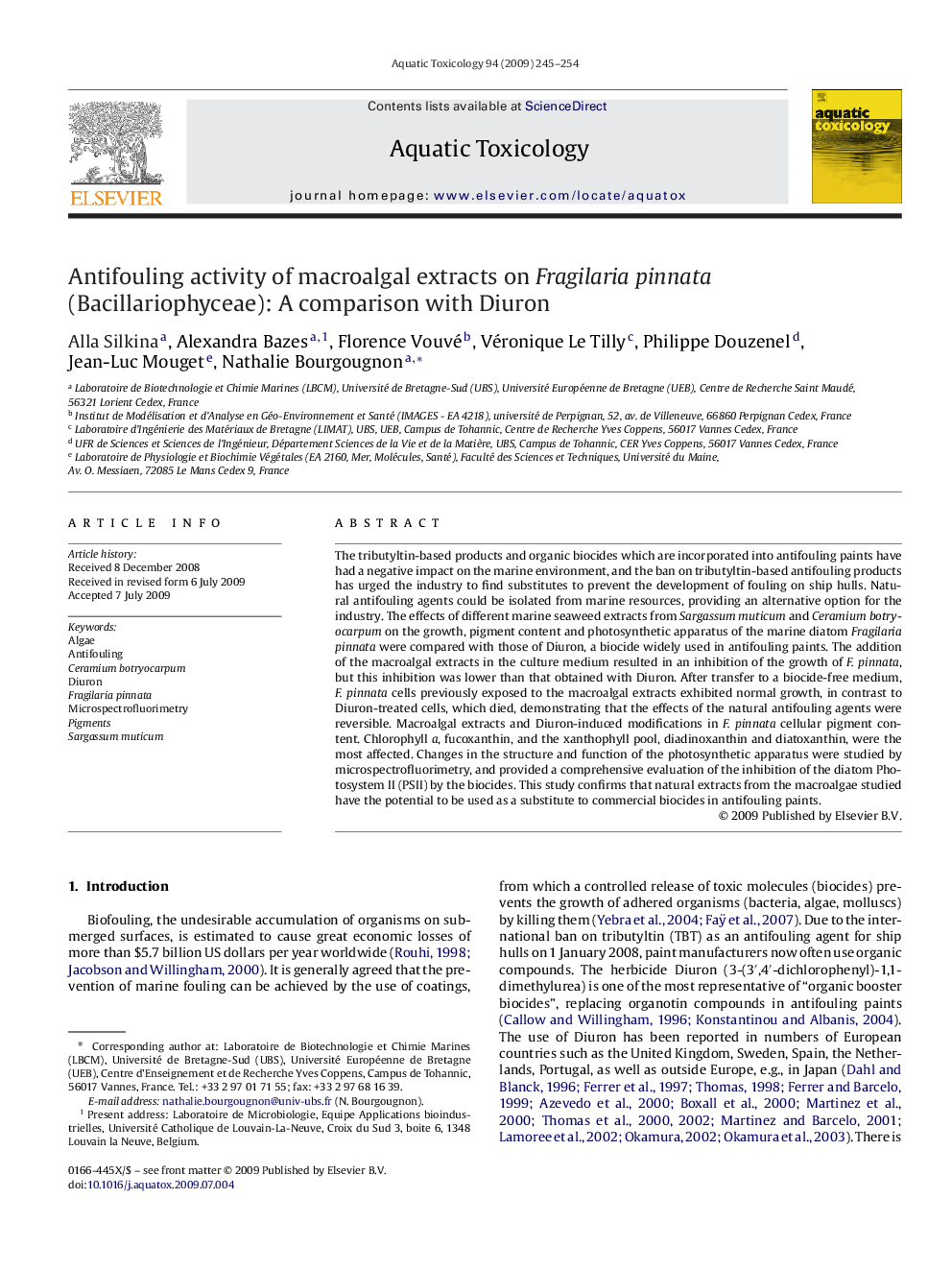| Article ID | Journal | Published Year | Pages | File Type |
|---|---|---|---|---|
| 4530597 | Aquatic Toxicology | 2009 | 10 Pages |
The tributyltin-based products and organic biocides which are incorporated into antifouling paints have had a negative impact on the marine environment, and the ban on tributyltin-based antifouling products has urged the industry to find substitutes to prevent the development of fouling on ship hulls. Natural antifouling agents could be isolated from marine resources, providing an alternative option for the industry. The effects of different marine seaweed extracts from Sargassum muticum and Ceramium botryocarpum on the growth, pigment content and photosynthetic apparatus of the marine diatom Fragilaria pinnata were compared with those of Diuron, a biocide widely used in antifouling paints. The addition of the macroalgal extracts in the culture medium resulted in an inhibition of the growth of F. pinnata, but this inhibition was lower than that obtained with Diuron. After transfer to a biocide-free medium, F. pinnata cells previously exposed to the macroalgal extracts exhibited normal growth, in contrast to Diuron-treated cells, which died, demonstrating that the effects of the natural antifouling agents were reversible. Macroalgal extracts and Diuron-induced modifications in F. pinnata cellular pigment content. Chlorophyll a, fucoxanthin, and the xanthophyll pool, diadinoxanthin and diatoxanthin, were the most affected. Changes in the structure and function of the photosynthetic apparatus were studied by microspectrofluorimetry, and provided a comprehensive evaluation of the inhibition of the diatom Photosystem II (PSII) by the biocides. This study confirms that natural extracts from the macroalgae studied have the potential to be used as a substitute to commercial biocides in antifouling paints.
